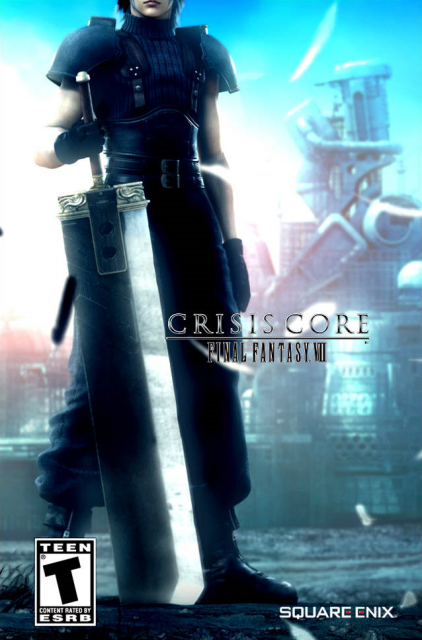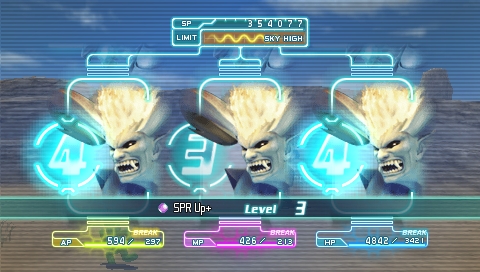The Key to Good Game Endings: The Subversive Pivot
By thatpinguino 39 Comments
Spoiler warning for the end of Crisis Core: Final Fantasy VII! I'm going to explore Crisis Core's ending in extreme depth so if you don't want the game spoiled do not read this!
Ending a game is hard. Even some of the most engaging games fall flat at the end or simply decide not to end at all. Often the final encounters will feel anti-climactic or the conclusion won’t feel definitive, something will be off. The worst endings tend to roll credits while leaving a huge vacuum where the emotional resolution should be. Some of this emotional vacuum is an intentional product of sequel based design, but I think most of it is product of design mistakes. Look at games like Mass Effect 3 and Fallout 3 - the endings of those games are by far the least engaging parts, and I think I know why. The gameplay loops that make up most of a gameplay experience don’t really lend themselves to engaging conclusions. Having a game end by presenting a bigger enemy to shoot or a pricklier dialog tree to climb is not distinct enough to make the ending stand out regardless of the narrative implications. If a developer attempts to use the same gameplay experience to power their ending as they do their ordinary gameplay, what often results is an ending that feels too much like the rest of the game to be truly special or memorable. To really bring a game home as effectively as possible, you need narrative, gameplay, and pacing to all come together at once in something I’ll call a subversive pivot. To highlight what I mean by a subversive pivot, I’ll use the strongest ending scene I have personally experienced: the end of Crisis Core: Final Fantasy VII.

Crisis Core is by no means a perfect game from a gameplay or narrative perspective; but, it uses darn near every tool in its arsenal perfectly in crafting its ending. In some ways, the ending of Crisis Core was set up to fail. Most FVII players that picked up Crisis Core already knew Zack’s story from the outset. They knew Zack dies at the end and that Cloud unknowingly carries on his legacy. They even knew when Zack would be gunned down. Yet, Zack’s last stand is so well constructed that it transcends all of that baggage.
Zack’s last stand seems like a normal fight at first, albeit with special music and a new combat background. The fight is against regular Shinra soldiers and an occasional offscreen missile; however, the soldiers can be easily killed and the missiles are easy to dodge. The first hint that something is amiss in this battle is the background music. The music begins to subvert the ordinary combat experience with a somber violin that hints at a melancholy tone for the final fight, contrasting well with the high paced rock music that backgrounds most of the game’s fights. The song, titled “The Price of Freedom,” then shifts to some acoustic rhythm guitar that recalls the game’s central theme “Under the Apple Tree.” The acoustic guitar ties the final fight to the game’s predominant aural aesthetic. Before long, an electric guitar joins the violin and acoustic guitar to blare out a triumphant, but somber riff that melds well with the defiant fight that Zack is trapped in. The battle music is equal parts rallying cry and dirge, setting the tone of the final fight perfectly.
You see, in the final battle the soldiers never stop coming. The missiles never stop firing. You can fight as hard as you want for as long as you can, but Zack will die. Zack must die. Rather than handling this in a cut scene, the developers of Crisis Core decided to force the player to play Zack’s defeat. They force the player to completely subvert their expectations: to progress they must lose. The expected goals of battle are completely turned on their head and this subversion allows Crisis Core to turn an ordinary battle scene into a powerful symbol of perseverance and tragic defeat.
Even the basic elements of combat are repurposed in the final battle. As Zack takes damage during the final fight, the DMW system (It stands for“Digital Mind Wave.” It is a sort of limit break roulette that allows Zack to use super moves he learned from his friends over the course of the game) begins to break as Zack gets injured. While the DMW allows you to use special moves every time it aligns in the regular game, in the final battle Zack has a flashback about each of his friends that are displayed on the roulette wheels. After seeing a flashback, the faces of Zack’s remembered comrades will wipe out of the DMW, never to be seen again. By using the DMW system to represent Zack’s fading memories, the developers transfigure the normally amazing lottery jackpot sound and graphic into a metaphor for Zack remembering his friends in his final moments. They turn the very mechanic that players love in the ordinary game into something they dread in the final fight: the DMW changes from a bonus meter to a health bar that is rapidly draining.

As Zack gets injured over the course of the fight he will begin to permanently use his injured animations regardless of his remaining HP. This makes fighting the good fight even harder. Regardless of how over-leveled or skilled you are, Zack’s health will creep down and his physical speed will diminish. He will fall down and get injured and you will have to control it knowing there is nothing you can do. I eventually gave up in this battle and found that giving up is even more painful than struggling. Zack’s life will lower to one, but he will not die until all of his friends have vanished from the DMW. This means that I had to control this upbeat, likeable, proud, powerful warrior as he was continually pummeled by soldiers that he could have killed with one or two attacks. Zack ends up falling to an army of weaklings and I could do nothing to stop it. Even worse I was complacent in it. While Zack’s death was known from the outset, playing through the final fight and controlling this beloved character as he gets torn apart was profoundly effective. Once Zack falls the scene goes black and the sound of gunshots intensifies. In the end Zack dies fighting three basic Shinra soldiers that he cannot kill no matter how hard he hits them. Now that is how you use a subversive pivot perfectly.
I think the take away here is that a great way to impact a player at the end of a game is to subvert the very gameplay systems they have relied on for the entire game. Take the things they know and use those very mechanics to deliver an entirely different experience. It is really difficult to make a boss that is big or powerful enough to leave an impression on people, but everyone remembers a good curveball. A great subversive pivot can expand the emotional range of a game and its mechanics in the way that a brute force approach often can’t.
P.S.If you want more great examples of subversive pivots look at the endings of Braid, FFX, Bastion, Chrono Cross, and the middle of Bioshock.
